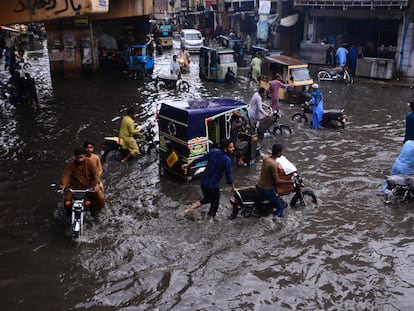The multibillion-dollar toll of the climate change crisis in 2022
Study puts insured property losses from this year’s 10 most costly weather disasters at more than $168.1 billion


At COP27 – the most recent United Nations (UN) climate summit – Sherry Rehman, Pakistan’s Minister of Climate Change, led the push to obtain compensation for developing countries. Held in November in the Egyptian resort city of Sharm el-Sheikh, COP27 produced a commitment to create an international fund to compensate for past and future losses and damages caused by global warming in vulnerable, less-wealthy nations. Rehman emerged as the spokesperson for the Global South’s demands for a compensation mechanism after her country suffered devastating floods that submerged 10% of Pakistan and became another symbol of the climate havoc wreaked on countries that may be less responsible for the problem.
Christian Aid, a UK-based relief and development agency, recently released a report listing the 10 most costly weather events of 2022, a list that included the floods in Pakistan. The report estimated the total economic impact of these 10 events at $168.1 billion in losses covered by insurers, stating, “the real cost is always higher and includes [human] elements that are hard to quantify.”
Since the study estimates are based on insured losses, the weather events that hit wealthier nations ranked highest on the top-10 list because property values are higher and are more likely to be insured. This is why Hurricane Ian, which hit the US and Cuba in late September and early October, and the extraordinary summer drought in Europe are at the top in terms of cost.
Hurricane 'Ian'
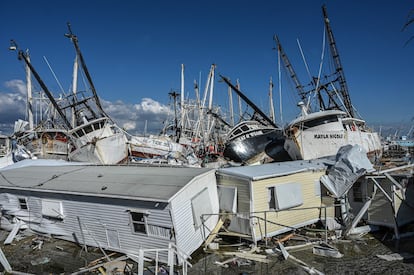
On September 26, Hurricane Ian made landfall in Cuba as a Category 3 storm. Three people died on the island and more than 30,000 were evacuated. But two days later, the storm strengthened to Category 4 and made landfall in Florida. In total, 130 people died in the United States, and Ian became the second deadliest hurricane in the US after Katrina. More than 40,000 people were displaced. Christian Aid’s report estimates the economic cost of this disaster at more than $100 billion.
The Intergovernmental Panel on Climate Change (IPCC), an intergovernmental body of the UN tasked with advancing scientific knowledge about climate change caused by human activities, warned in its latest report that human-caused global warming is already producing stronger and more frequent cyclones and hurricanes around the world.
Extreme drought in Europe

The European Commission’s Copernicus Climate Change Service (C3S) says the summer of 2022 was the hottest in Europe since at least 1880. High temperatures coupled with an unprecedented drought dropped major European rivers like the Rhine (Germany), the Loire (France) and the Po (Italy) to very low water levels. Spain also suffered as its reservoirs fell to levels not seen since the great drought of the mid-1990s. The 2022 drought caused over $20 billion in losses to the agriculture, livestock and energy generation sectors.
A report from World Weather Attribution (WWA), an organization that specializes in the attribution of extreme events to climate change, highlights the unusual nature of the drought that hit Europe and the northern hemisphere, and warns that the current pace of global warming could lead to similar droughts every 20 years. Without any climate change effects, such an extreme drought would only occur every 400 years.
Floods in China
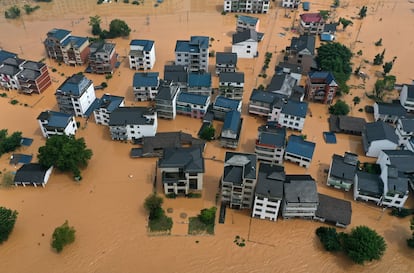
This year’s rainy season (June-August) in China was intense and caused major flooding, says the Christian Aid report that estimated insured losses at $12.3 billion. The report notes that climate change also affects rainfall patterns, and says that more torrential rains are expected in China, which will cause more flooding.
Drought in China
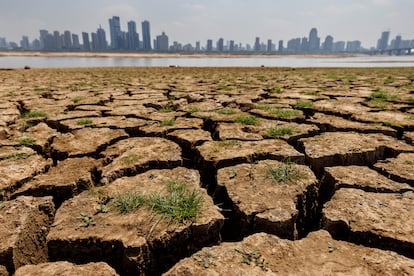
Despite the floods, large areas in China suffered high temperatures and low rainfall in 2022. The nation’s largest river – the Yangtze – and others dropped to levels so low that hydroelectric power generation and river transportation were affected. The Christian Aid report estimated insured losses at $8.4 billion.
Floods in Australia
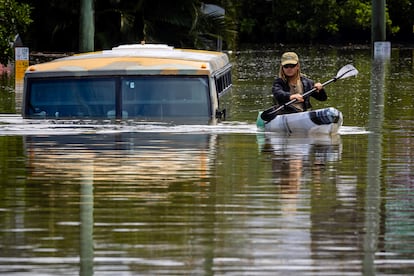
From February to April, much of eastern Australia was inundated by heavy rains that led to major flooding. The final human toll was 27 dead and more than 60,000 displaced from their homes, with insured losses of $7.5 billion.
Floods in Pakistan
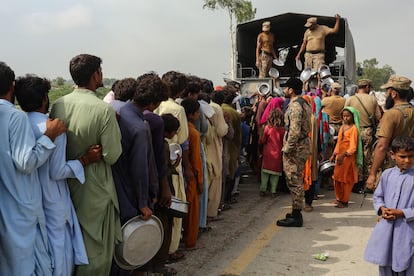
From June through August, Pakistan experienced an extremely intense monsoon season that inundated a significant portion of the country. Floods killed over a million livestock and destroyed an estimated area of 9.4 million acres of crops. Seven million people were forced to evacuate their homes and 1,739 died in flooding described by Pakistan’s Prime Minister Shehbaz Sharif as “biblical.” While insured losses were estimated at $5.6 billion, the total economic losses were much larger. An assessment by the World Bank concluded that the damages from the floods and the economic losses exceeded $30 billion.
WWA climate experts conducted an attribution report on this event and concluded that climate change likely increased the abnormally high monsoon rain over Pakistan that led to the floods. Pakistan has only contributed about 0.3% of all greenhouse gas emissions since the Industrial Revolution, although it is in the red zone for climate risks.
Storm 'Eunice'
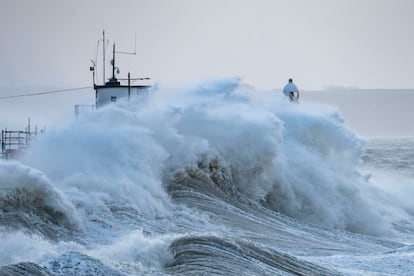
Storm Eunice hit northern and central Europe in February. The extreme event caused extensive damage in Belgium, Germany, Ireland, the Netherlands, Poland and the United Kingdom, and claimed the lives of 16 people. The cost of this storm exceeded $4.3 billion.
Drought in Brazil
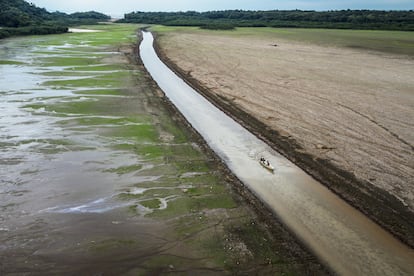
The ongoing drought in Brazil cost more than $4 billion in 2022. The lack of rainfall is linked to La Niña, a cyclical weather phenomenon that has been affecting South America for three years.
But Christian Aid’s report points to human activity as being partly responsible for the drought, citing deforestation in the Amazon rainforest that has been linked to reduced rainfall in the region.
Hurricane 'Fiona'
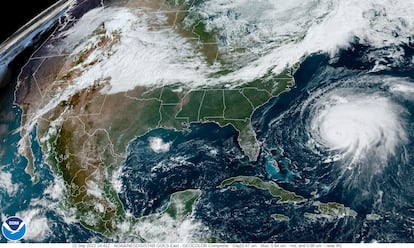
Hurricane Fiona first struck Puerto Rico in September, knocking out power for 90% of the population. It then moved on to the Dominican Republic, displacing 13,000 people and leaving 1.2 million without running water. After causing damage on several other Atlantic islands, Fiona eventually made it to Canada and became the most intense tropical storm to ever hit the country. The hurricane killed 25 people and caused losses of over $3 billion.
Floods in South Africa
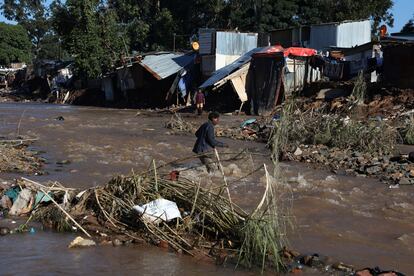
In April, several days of heavy rains in South Africa triggered flooding and landslides. At least 459 people died and more than 40,000 were displaced from their homes. Insured property losses exceeded $3 billion, and a WWA report again pointed to human-induced climate change as one of the causes of the region’s higher rainfall.
Sign up for our weekly newsletter to get more English-language news coverage from EL PAÍS USA Edition
Tu suscripción se está usando en otro dispositivo
¿Quieres añadir otro usuario a tu suscripción?
Si continúas leyendo en este dispositivo, no se podrá leer en el otro.
FlechaTu suscripción se está usando en otro dispositivo y solo puedes acceder a EL PAÍS desde un dispositivo a la vez.
Si quieres compartir tu cuenta, cambia tu suscripción a la modalidad Premium, así podrás añadir otro usuario. Cada uno accederá con su propia cuenta de email, lo que os permitirá personalizar vuestra experiencia en EL PAÍS.
¿Tienes una suscripción de empresa? Accede aquí para contratar más cuentas.
En el caso de no saber quién está usando tu cuenta, te recomendamos cambiar tu contraseña aquí.
Si decides continuar compartiendo tu cuenta, este mensaje se mostrará en tu dispositivo y en el de la otra persona que está usando tu cuenta de forma indefinida, afectando a tu experiencia de lectura. Puedes consultar aquí los términos y condiciones de la suscripción digital.
More information
Archived In
Últimas noticias
David Bowie, the galactic thinker who encouraged us to break new ground
John Berger and the loss of rural culture
From police officer to bloodthirsty kidnapper: Terror in Mexico during the years of ‘The Ear Chopper’
Alain Aspect, Nobel laureate in physics: ‘Einstein was so smart that he would have had to recognize quantum entanglement’
Most viewed
- David King, chemist: ‘There are scientists studying how to cool the planet; nobody should stop these experiments from happening’
- Reinhard Genzel, Nobel laureate in physics: ‘One-minute videos will never give you the truth’
- Oona Chaplin: ‘I told James Cameron that I was living in a treehouse and starting a permaculture project with a friend’
- Sinaloa Cartel war is taking its toll on Los Chapitos
- Mexico completes its trade shift with the entry into force of tariffs on China and countries without trade agreements
